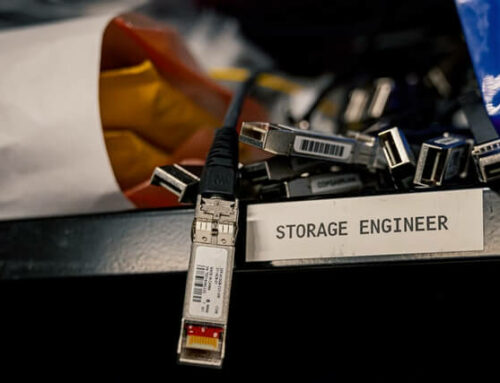The traditional three-tier network architecture isn’t fit for use anymore.
This older network-centric design and restrictive hub-spoke architecture cannot be centrally managed, and the lack of consistent network policies increases the chance of human error, security breaches, and network outages. These networks struggle to meet modern demand, are not intrinsically cloud-ready—and most critically—require a great deal of manual, on-site configuration.
If you’re already running on Cisco networking in your data center and you’re potentially looking to upgrade to the Cisco 9000s, then it’s time to leave the old spanning tree protocol[1] behind.
Replace it with Cisco’s software-defined, spine-and-leaf architecture Application Centric Infrastructure (ACI).
Cisco ACI Changes the Game
In response to these limitations and inefficiencies, Cisco developed its ACI offering. Some of its advancements and benefits include:
Software-Defined Networking (Replaces Manual Configuration)
Cisco ACI is a software-defined networking (SDN) solution that abstracts network connectivity by using group-based policies instead of traditional hub-spoke configurations. ACI enables application mobility as well as data center automation capabilities to shorten app deployment times and reduce on-site burdens of configuration.
Built for Cloud Out-of-the-Box
Unlike the traditional three-tier network architecture, ACI is cloud-ready, designed to support private, public, and hybrid infrastructure. The ACI fabric is built on the leaf-spine architecture first introduced in the Nexus7000s. This leaf-spine architecture enables your network admins to seamlessly:
- Add spines for increased bandwidth
- Add leaves for more ports
This scalability and ease-of-installation all comes without the hassle of having to configure the devices on the data center floor—you can do it all remotely and programmatically through ACI’s automation abilities.
Intent-Based Networking
Cisco ACI’s intent-based networking enables network admins to define intent (in the form of policy) rather than have to force or infer intent through network configuration. ACI’s intuitive automation controls streamline this process through complete automated provisioning and management of the network’s infrastructure.
How Do You Get There from the Traditional Three-Tier Network Architecture?
Cisco ACI enables organizations to scale according to their real-time needs without having to source and pay for additional virtual resources. But implementation of Cisco ACI does require the learning of new concepts and best practices.
Cisco recommends the following to enable the transition to a leaf-spine architecture from the three-tier network architecture:
- Fully understand Cisco ACI before acquisition – Understanding the scope of the transition and how it will affect your people, processes, and technology is critical; failing to do so often ends in unmet expectations (read: increased support tickets).
- Expand implementation teams to include application developers, network, and cloud personnel – To unlock the complete value of ACI, you need to instill an application-centric philosophy in your network team. This requires collaboration between application and cloud orchestration staff.
- Be dedicated to training – Lead your workforce well and encourage time and resource investment in training towards this new architecture. While ACI builds on some traditional constructs, the majority of its offerings are new concepts altogether.
Implement. Streamline. Automate.
ADAPTURE has the Expertise You Need to Move from a Three-Tier Network Architecture to Cisco ACI
Your IT team is already spread thin with managing your current projects and technology solutions. Based in Atlanta, Cisco Premier Partner ADAPTURE enables organizations to implement Cisco ACI without putting additional strain on their teams.
Where you deploy your workload should be a business decision, not a technical restraint. If you’re ready to deploy an application-centric view across all of your environments, the ADAPTURE Solution Architects have the experience and knowledge necessary to deploy and implement Cisco ACI customized to your company’s need. Additionally, our team of experts will train your IT team on managing your network through the Cisco ACI interface for a seamless transition from the traditional three-tier architecture to a scalable network experience.
[1] Spanning Tree Protocol (STP) is a Layer 2 protocol that transfers data back and forth across your network to determine how switches are organized. From there, it takes all of the location and identity data it has gathered and creates a logical tree architecture.












